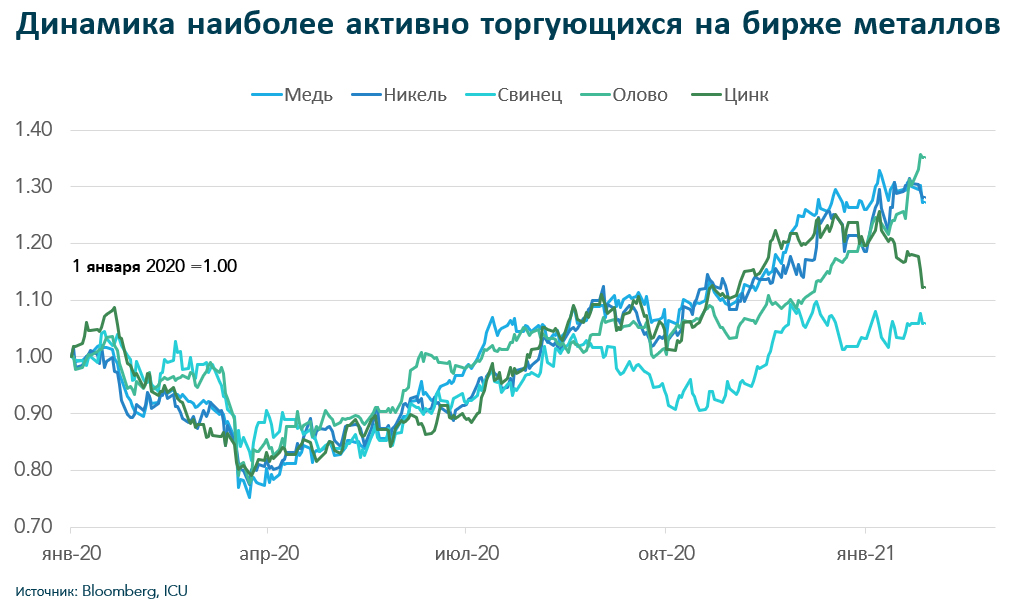
The Stainless Steel and Black Metal Market
Since December 2020, the price of stainless steel has increased by 70%, from 70 UAH per kg to 120 UAH per kg, and it continues to rise. Over the same period, black metal prices have doubled. This sharp price increase has hit almost all sectors of the economy, but it particularly affects industries like ours, where our products are 90% made of metal. Why are prices rising? What causes and factors contribute to this? We will explore all of this in this article.
Like any sector, light industry has suffered from the COVID-19 pandemic, which started at the end of 2019 but "paralyzed" almost the entire world by February 2020.

The raw materials market has taken the biggest hit, as China was the first to face the pandemic, and it is the world's largest producer and importer of ferrous and non-ferrous metals. In fact, Hubei Province, which became the epicenter of the disease in China, is one of the largest metallurgical centers in the world.
Stainless Steel: Why Have Prices Increased?
In turn, the price of stainless steel is driven by the price of nickel, one of the main components used to produce steel. Nickel prices are determined on exchanges, which we will mention several times in this article.
Even before the global pandemic, in December 2019, the reputable company "Fitch Solutions" predicted a decrease in nickel production compared to the previous year. They linked this to the introduction of a moratorium on ore exports from the promising new market in Indonesia. A 15.4% decrease in annual nickel ore production was forecast compared to 2019.
In terms of more global forecasts for the next decade, experts noted a general decrease in nickel ore production compared to the years 2010-2019.
However, it was the pandemic that intervened in the price formation process. And the consequences were quick to follow — by the first half of 2020, stainless steel production had decreased by 6% compared to the same period in 2019. In addition, the volume of imports decreased by 6.4%.

To avoid losses, the main stainless steel producers in China raised prices, setting off irreversible changes in the market. As a result, prices on the London Metal Exchange surged, affecting stainless steel producers and consumers worldwide.
In the future, nickel prices, and consequently stainless steel prices, continued to rise. Among the positive changes, we can note the stability and the absence of sharp price fluctuations, which negatively impact raw material consumption.
However, all the above-mentioned events also affected industries that use stainless steel. Manufacturers around the world, in order to cover their raw material costs, were forced to raise the prices of their products.
Black Metal: Demand Increased the Price
In the case of stainless steel, reduced production volumes were the main factor in the price increase, whereas black metal became more expensive due to abnormal demand. By the end of summer 2020, when most developed countries had recovered from the first wave of COVID-19, there was a huge demand for raw materials for industrial needs.
The price increase was driven by a shortage of raw materials and stocks worldwide. However, Europe felt the impact the most. In the first three quarters of 2020, metal stockpiles, including black metal, decreased by more than 19 million tons. Despite all predictions, everyone hoped for a price decrease, but demand ultimately exceeded supply, and prices continued to rise steadily.
How Did the Dollar Affect Metal Prices?
In 2020, the United States began the unpopular process of stabilizing the economy and supporting citizens affected by COVID-19, namely selling securities and thereby injecting money into the financial system. All major world currencies — the Euro, Yuan, Franc, and Pound — strengthened and appreciated against the US dollar.

This also impacted various exchanges where everything is sold in US dollars. The metallurgical sector was affected too — the prices of all metals, including black metal and stainless steel, increased. Due to the rising dollar, oil and gas prices also increased, which in turn influenced raw material prices.
"Non-Metal" Reasons for Price Increases
Once again, we must mention COVID-19, which affected all industries and sectors of the economy.
Prices were adjusted due to annual inflation. According to Ukraine's Ministry of Economy, inflation in 2020 was 5%, which inevitably affected prices.
Prices of consumables used for production, packaging, and transportation also increased. A clear example is the rise in the price of polyethylene, which increased by an average of 25%. This was due to logistics issues in China.
Companies engaged in sea transport were not prepared for the volume of goods shipments after the quarantine in China ended. Delays in deliveries began worldwide, which in turn increased the cost of maritime shipping.
Read also:
- Autoclave Operating Modes
- What is an Autoclave?
- Autoclave Hydraulic Testing
- How to Use an Autoclave
- How to Choose an Autoclave









